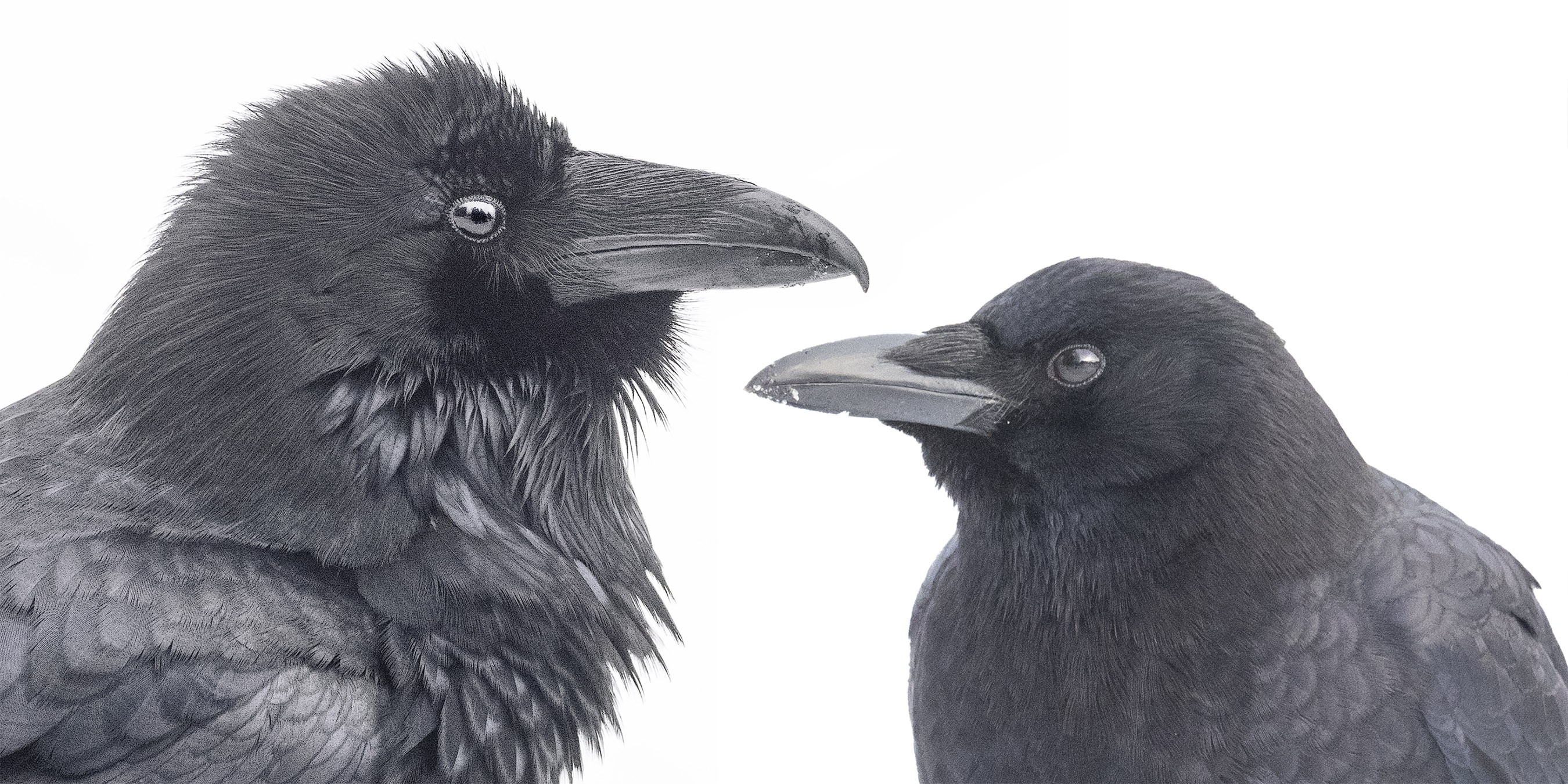Distinguishing between a crow and a raven can be tricky, as these intelligent birds share similarities. Many people confuse them, but key differences can help you tell them apart. This guide explores the distinctions in appearance, behavior, sounds, and habitat to help you confidently identify these fascinating corvids.
Let’s dive into the details that separate crows from ravens.
Size and Shape
One of the most noticeable differences is size. Ravens are significantly larger than crows. Ravens can measure up to 26 inches long with a wingspan reaching 51 inches. Crows, on the other hand, typically reach about 18 inches in length with a wingspan of around 36 inches.
Besides size, the shape of their tails in flight differs. A raven’s tail appears diamond-shaped or wedge-shaped, while a crow’s tail is fan-shaped or rounded.
Beak and Throat Feathers
Examine their beaks and throat feathers closely. Ravens possess a larger, more curved beak compared to crows. They also exhibit shaggy throat feathers, creating a beard-like appearance.
Crows have a smoother throat and a more slender beak. While crows can fluff their feathers, their throat feathers lack the distinctive shagginess of a raven.
Flight Patterns
Observe their flight patterns. Ravens often soar and glide gracefully, utilizing air currents. Crows tend to flap their wings more frequently during flight. However, crows sometimes enjoy riding wind gusts.
Vocalizations
Listen carefully to their calls. Crows are known for their characteristic “caw-caw” sound. Ravens produce a deeper, more croaking sound. They also have a wider range of vocalizations, including a unique knocking sound.
Here are some examples:
- Crow Alarm Call: Often heard in urban environments.
- Crow “Rattle” Call: A softer, more intimate form of communication.
- Raven Call: A common deep, croaking sound.
- Raven Knocking Call: A subtle, melodic sound.
Social Behavior
Consider their social behavior. Crows are highly social and often gather in large flocks, especially at night in communal roosts. Ravens are typically seen alone or in pairs. If you observe a large black bird being mobbed by smaller ones, it’s likely a raven being harassed by crows.
Habitat
While both species can be found in various habitats, crows are more commonly seen in urban and suburban areas. Ravens tend to prefer more rural or wilderness environments, such as forests, mountains, and deserts.
Attitude and Intelligence
Both crows and ravens are intelligent and adaptable birds. They exhibit complex problem-solving skills and are known for their cunning and resourcefulness. Their intelligence is reflected in their behavior and interactions with their environment.
Other Resources for Identification
- Kaeli Swift – Corvid Research: A blog dedicated to corvid-related topics: Corvid Research
- John Marzluff’s Books: “In The Company of Crows and Ravens” and “Gifts of the Crows”.
- Bernd Heinrich’s Books: “Ravens in Winter” and “Mind of the Raven”.
- Audubon: How to Tell a Raven From a Crow
- Cornell University Birdlab: Crows and Ravens by Kevin McGowan
By considering these distinctions, you can more accurately identify crows and ravens in various settings. Remember to observe their size, shape, behavior, sounds, and habitat to make an informed identification.
